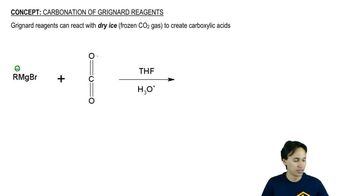Predict the products of the following reactions.
(d) product of (c) + cyclopentylmagnesium bromide, then acidic hydrolysis

 Verified step by step guidance
Verified step by step guidance Verified video answer for a similar problem:
Verified video answer for a similar problem:



 13:4m
13:4mMaster Reactions of Organometallics with a bite sized video explanation from Johnny
Start learning